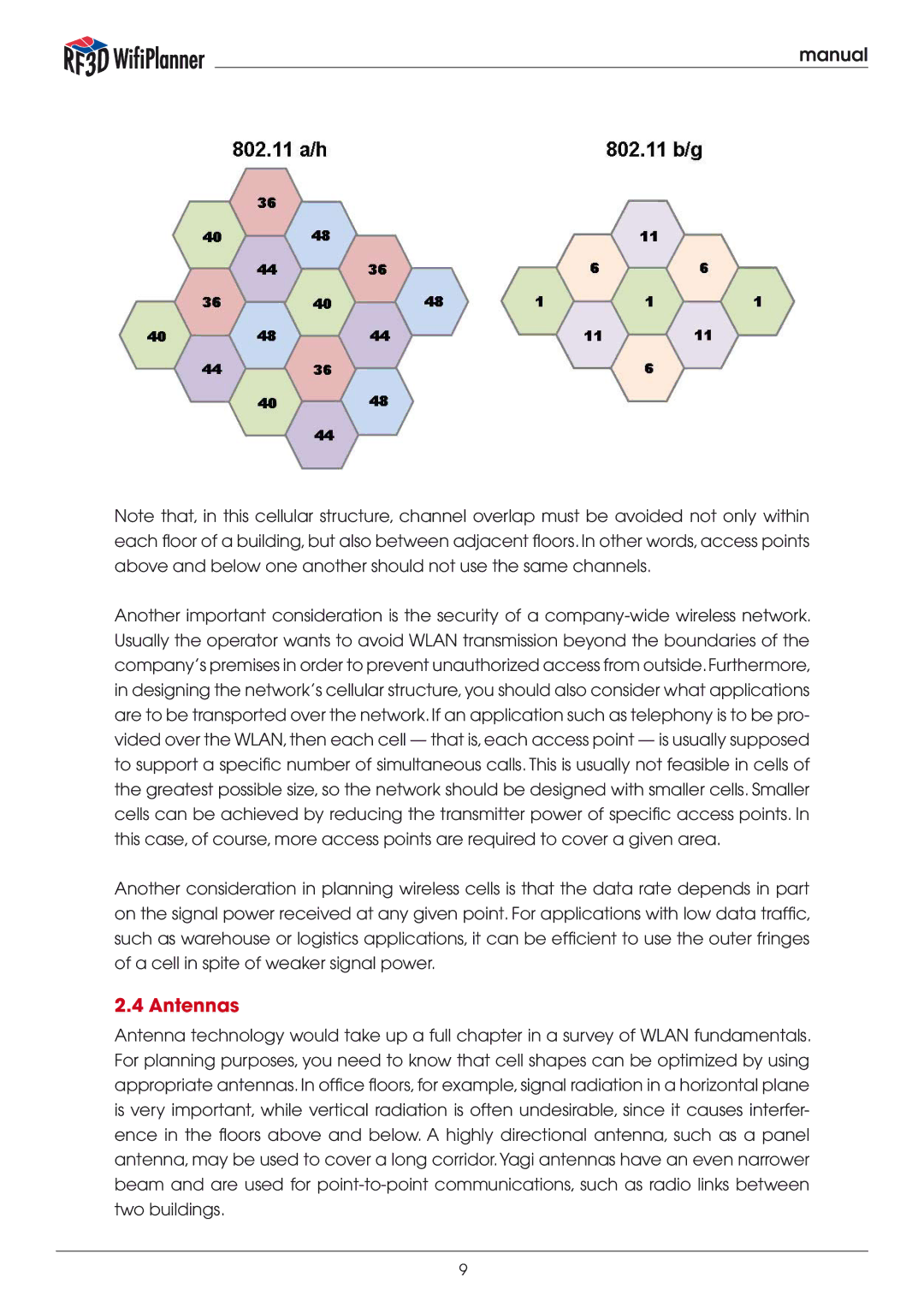
manual
Note that, in this cellular structure, channel overlap must be avoided not only within each floor of a building, but also between adjacent floors. In other words, access points above and below one another should not use the same channels.
Another important consideration is the security of a
Another consideration in planning wireless cells is that the data rate depends in part on the signal power received at any given point. For applications with low data traffic, such as warehouse or logistics applications, it can be efficient to use the outer fringes of a cell in spite of weaker signal power.
2.4 Antennas
Antenna technology would take up a full chapter in a survey of WLAN fundamentals. For planning purposes, you need to know that cell shapes can be optimized by using appropriate antennas.In office floors,for example,signal radiation in a horizontal plane is very important, while vertical radiation is often undesirable, since it causes interfer- ence in the floors above and below. A highly directional antenna, such as a panel antenna, may be used to cover a long corridor.Yagi antennas have an even narrower beam and are used for
9
